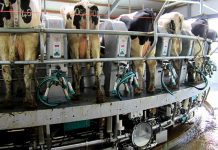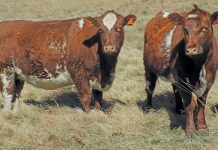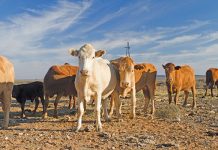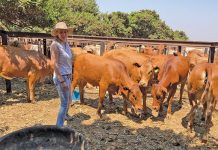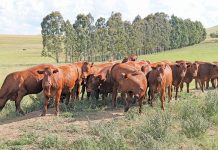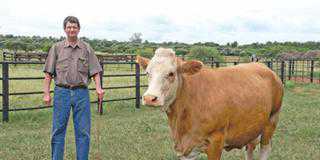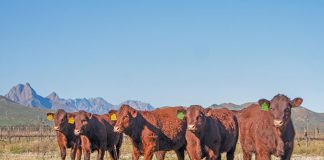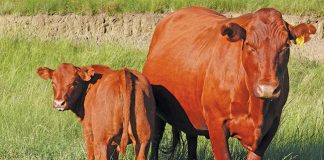Internal parasites
Heavy mortalities due to wireworm infestation were reported. It’s important that the correct anthelmintic group for treatment is given to animals, as anthelmintic resistance is rife. Your vet can assist you by doing a faecal egg count reduction test. This will show which anthelmintic groups are still able to control the internal roundworms on the farm.
As the worm burdens are presently so high, it’s now time to select sheep adapted to parasites. If you are not using the Five Point check management system contact your vet.
With autumn approaching, animals will be put to grazing in vleis, where standing water is the ideal breeding place for water snails, the intermediate hosts for liver fluke. It is therefore important that animals are treated for liver fluke infestation before they come in contact with the snails to prevent them becoming infected. Your vet will be able to advise you which actives to use.
External parasites
After the rains and hot weather, tick numbers have increased and with that tick-transmitted diseases such as African and Asiatic redwater, anaplasmosis and heartwater. Make sure the actives used for tick control are still working. Tests can be done on ticks to assess the efficacy of the acaricides used. Contact your vet for information.
Venereal diseases
It’s important to keep biosecurity measures for venereal (trichomonosis and vibriosis) diseases intact. Now is the time to assess conception rates in the flock/herd through pregnancy examinations and scanning. By testing bulls coming out of the herd, you can establish if there are venereal diseases present in the herd and take corrective actions.
Insect-borne diseases
Large outbreaks of blue tongue, lumpy skin disease, three-day stiff sickness and African horse sickness were recorded. It’s so important that animals are vaccinated annually in August, before the rainy season commences, for these diseases.
Also bear in mind that some animals do not immunise well due to poor nutritional status and underlying diseases such as BVD and enzootic abortion.
Zoonotic diseases
Rabies cases were reported and bovine brucellosis continues to be a big concern. Test livestock for brucellosis and remove positive animals from the farm. Be careful when buying animals – quarantine and test them before they’re introduced into the herd.
Remember to vaccinate heifers with Strain 19 vaccine before the age of eight months.
Bacterial diseases
Bacterial diseases can be controlled through properly planned vaccination programmes. It is important to update your control programme continuously, in consultation with your vet.
Viral diseases
Bovine respiratory disease (PI 3, IBR, BVD, BRSV) can be controlled through vaccinations.
Poisonings
The following poisonings were reported: ink berry, Cynanchum (klimop), geeldikkop, kikuyu, Lantana, onion, succulent plants, prussic acid, rye grass, amitraz, urea, acidosis and hypo. Snake bites were also reported.
Illegal products
Many illegal products are being sold to farmers. Use only products that have been registered according to Act 36 of 1947.
Feedlot report
Sheep feedlots
- The incidence of pneumonia, foot rot, coccidiosis and wireworm infestation increased due to the wet weather conditions.
- An outbreak of Salmonella Typhimurium caused serious losses in a feedlot. The sheep were infected on the farm of origin as mortalities commenced a day after arrival. It is suspected that the infection was picked up while sheep were kraaled before transported. Especially in wet conditions infection can spread rapidly.
- Mortalities due to pulpy kidney are always present. Losses could be curbed if lambs are vaccinated once with pulpy kidney vaccine with an oil adjuvant at two to three months of age.
Cattle feedlots
- Lung health of cattle was relatively good in February. In areas where it had been very wet pneumonia cases increased.
- Foot rot cases increased due to wet conditions in kraals.
- Lumpy skin cases occurred.
- Mortalities due to acidosis coupled with bloat and red gut are ascribed to feeding patterns disrupted due to rainy conditions.
- Blackquarter cases occurred and a few cases of swelled head were diagnosed.
- Numerous cases of ringworm were seen in calves with lower body weights.
- Permanent infected BVD calves were diagnosed in animals in poor condition, diarrhoea and which died. Severe damage was seen in the intestinal tract especially in the large intestine.
- Mortalities in calves due to red water and anaplasmosis occurred in numerous feedlots.
- A few loads of calves arriving at feedlots had severe blue tick infestations.

